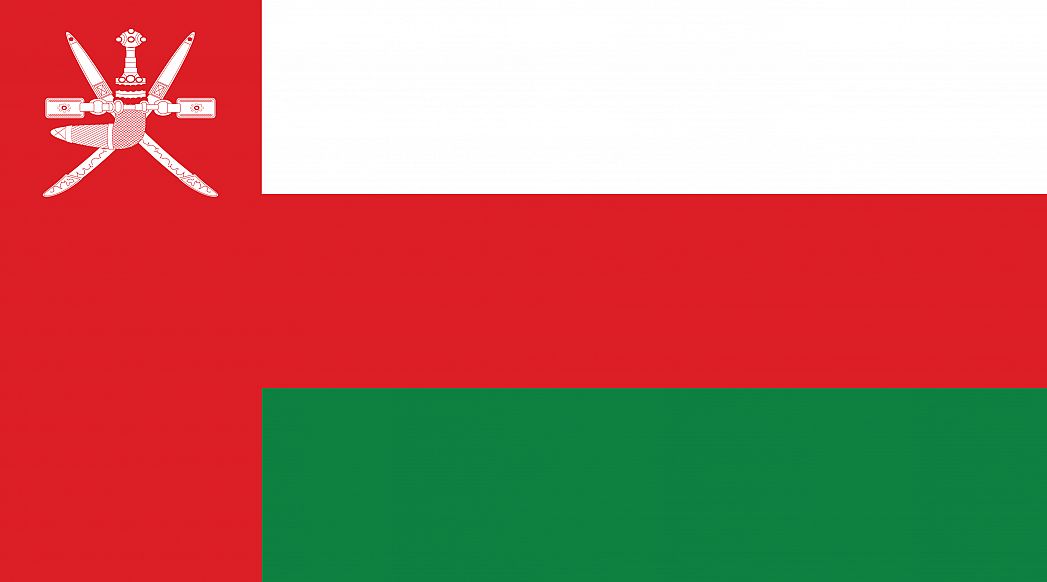The Omani flag comprises three horizontal stripes of white, red, and green and a red bar at the hoist. At the top of the red bar sits a white national emblem of the nation. The national symbol of Oman is a traditional curved dagger in a sheath, fastened onto two crossed swords using a belt and its attachments. The name of the flag, dagger and two swords is derived from the insignia. The 1970 flag was slightly modified in 1995 to give rise to the current flag. The modifications included increasing the size of the horizontal red stripe and changing the proportion of the flag from 2:3 to 1:2. The flag of the Sultanate of Oman, as it is now, was officially adopted on April 25, 1995.
The red color of the Omani flag is typical to the flags of Gulf States. White symbolizes peace and prosperity. It is also associated with the Imam, who is the religious leader of Oman. Green represents the Green Mountain of Jabal Al-Akdar which forms part of the Al Hajar Mountains and is one of the most spectacular sights in Oman. The color is also related to fertility. The curved dagger on the national emblem is called a khanjar, and it is a symbol of pride and singularity in the country. The dagger was worn traditionally by men during official and social occasions together with the traditional Omani costume. The two swords, locally known as saifs are also part of the national dress.
Sultan Qaboos introduced a new set of flags in the Sultanate of Oman in 1970 after he successfully dethroned his father. The flag was designed by adding bands of white and green and the badge of the ruling dynasty to the plain red banner previously used by Muscat and Oman. The sultan also proposed amendments to the flag of 1970 in 1995. At the sultan’s request, the width of the horizontal red stripe was increased from one-fifth to cover one-third of the flag’s width, while that of the vertical red bar was decreased from one-third to one-quarter of the fly. The design also modified the proportion of the flag from 2:3 to 1:2.
The history of the flag of Oman dates back to 751 when the interior part of the country was known as the Imamate of Oman or Oman proper. The Imamate had a plain white flag with the khanjar and two swords as its emblem. Muscat, which was also an independent Kingdom, was known as the Sultanate of Muscat and it flew a plain red flag between 1650 and 1820. In 1820, Oman Proper, Seeb, and the Sultanate of Muscat merged to form the Sultanate of Muscat and Oman which continued to use the unicolored flag until 1970.
This page was last modified on May 1st, 2018
More on Graphicmaps

Published on 2019-11-06
What is a Trade Embargo?

Published on 2019-11-04
Which Two Countries Used to Have the Same Flag?

Published on 2019-09-16
What Is the Only Two-Sided State Flag?

Published on 2019-09-16
Which Country Flag Looks Like the Texas Flag?

Published on 2019-08-29
Flags That Resemble the US Flag

Published on 2019-08-20
